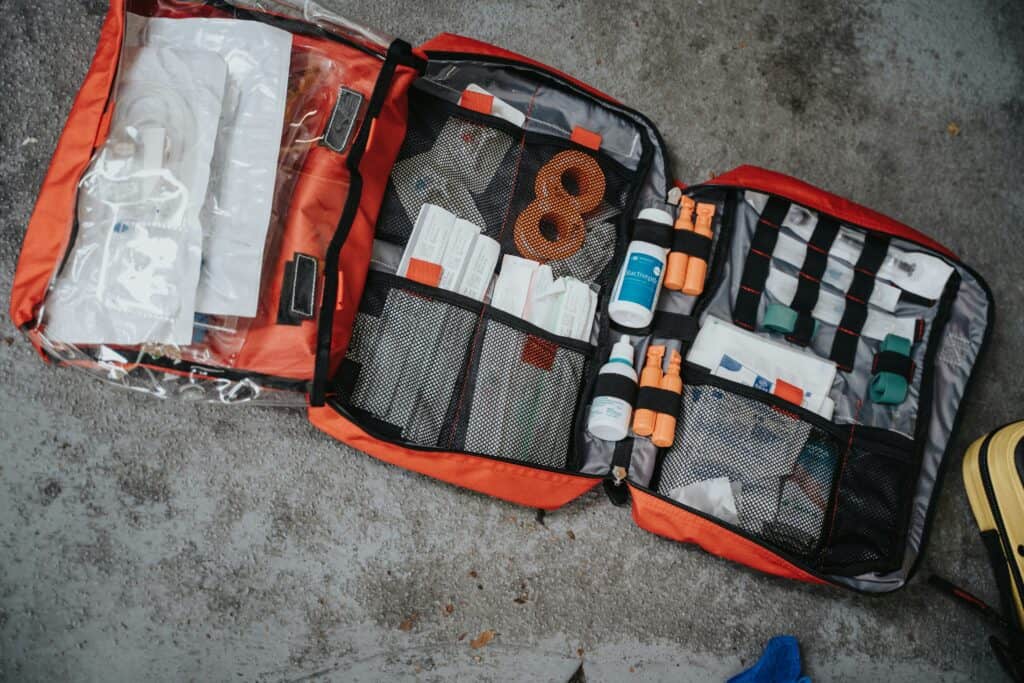ALICE Training is a component of emergency preparedness in schools, workplaces, and other organizations, aiming to empower individuals to respond effectively and safely to violent critical incidents. As an alternative to the traditional “lockdown only” approach, ALICE stands for Alert, Lockdown, Inform, Counter, and Evacuate, providing individuals with a set of proactive strategies to follow in the event of an active shooter situation.
This comprehensive program is designed to instill confidence in participants and equip them with the necessary skills to protect themselves and others. Utilizing a combination of hands-on training, scenario-based drills, and informative sessions, ALICE Training aims to reduce casualties and injuries by teaching individuals to assess the situation and take appropriate action. The program has been adopted by numerous institutions and is widely recognized as an essential response tool in the face of potential threats.
Understanding ALICE Training
ALICE Acronym
ALICE stands for Alert, Lockdown, Inform, Counter, and Evacuate. The ALICE Training program provides guidelines for individuals and organizations to prepare for and respond to active shooter situations. Each component of the acronym emphasizes specific actions to prioritize in a crisis.
Active Shooter Response Training
The ALICE Training program addresses the growing need for active shooter response training and uses research-based methods to educate and empower individuals in the face of violence. Through a blend of online and in-person instructions, the program ensures participants have the knowledge and skills to make informed decisions during emergencies. This training can be applied in schools, churches, hospitals, and other organizations.
Strategies for Survival
The key to survival in an active shooter situation is having a variety of defensive options and being prepared to adapt to changing circumstances. The ALICE Training program teaches participants to:
- Alert: Recognize and report the threat immediately.
- Lockdown: Secure the immediate area by locking or barricading doors. Turn off lights and silence electronic devices.
- Inform: Communicate the shooter’s location and direction, if possible, to help responders and potential victims.
- Counter: Create noise, movement, and distraction to disrupt the shooter’s aim. As a last resort, engage in physical defense.
- Evacuate: Leave the area as quickly and safely as possible when an opportunity presents itself or when authorities provide instructions.
By understanding and implementing these strategies, individuals can increase their chances of survival in an active shooter situation.
Implementation in Different Locations
Schools
ALICE Training® is a research-based active shooter response program designed for various locations, including schools. It combines online and in-person instructions to ensure that all stakeholders within a school district are prepared for dangerous situations. More than 5,000 school districts have received an ALICE certification.
Workplaces
The ALICE Training program can also be implemented in workplaces to help employees respond effectively to violent incidents. By providing a blend of online and in-person modules, the program equips workers with the knowledge to increase their chances of survival in an active shooter situation.
Healthcare Facilities
In healthcare settings, ALICE Training provides staff with a comprehensive understanding of how to handle violent situations that may arise. Due to the unique environment of medical institutions, the program can tailor its modules to suit the specific needs of healthcare professionals.
Churches and Houses of Worship
Places of worship need specialized training to address potential threats and respond appropriately. The ALICE Training program offers tailored solutions for churches and other houses of worship, incorporating scenario-based training to ensure that individuals can manage security risks effectively.
In summary, ALICE Training is an adaptable and valuable program for different locations, including schools, workplaces, healthcare facilities, and places of worship. It ensures that individuals can confidently and knowledgeably respond to potentially dangerous situations.
Key Components of ALICE Training
Alert and Inform
ALICE Training focuses on enhancing situational awareness, which entails being aware of one’s surroundings, recognizing threats, and knowing what response options are available. The “Alert” component occurs when a threat is first recognized, and a quick response time is crucial for a safe outcome. The “Inform” component aims to ensure that all relevant individuals are made aware of the situation, which better enables them to make informed decisions about their response.
Lockdown and Enhanced Lockdown
In ALICE Training, the “Lockdown” strategy involves securing a physical space during an emergency situation. This can involve locking doors, barricading entry points, and staying away from windows. An “Enhanced Lockdown” may be implemented when more stringent security measures are required. This could include additional barricades, completely blocking visibility from the outside, and maintaining strict silence in the secured area.
Counter Measures
The “Counter” component of ALICE Training focuses on empowering individuals to take active steps to disrupt an intruder or attacker. Countermeasures may involve distraction tactics, rapid movement to avoid danger, or even physical force if it is deemed necessary. The overarching goal is to provide enough time and opportunity for other individuals to evacuate or further secure their location.
Evacuation and Strategic Evacuation
Evacuation is a key aspect of ALICE Training, as it prioritizes getting people away from the threat as quickly and safely as possible. A “Strategic Evacuation” takes this approach a step further, involving preplanned routes and procedures to optimize the evacuation process and increase the chances of a safe outcome. This may include designated meeting points, evacuation leaders, and methods for coordinating and assisting individuals during the evacuation.
Additional ALICE Resources
ALICE Blog
The ALICE Blog provides a wealth of information related to the ALICE training program. Covering topics such as active shooter prevention, safety drills, and testimonials, the blog offers insights and advice for individuals and organizations seeking knowledge in active shooter response training.
ALICE Webinars
One of the most effective ways to gain a deeper understanding of the ALICE training program is through their informative webinars. These webinars discuss best practices, offer educational content, and even provide live demonstrations to help educate audiences on how to respond during violent incidents.
ALICE Case Study Videos
By examining real-life experiences, ALICE case study videos showcase the practical application of ALICE training principles in various situations. These case studies demonstrate its effectiveness in helping individuals and organizations improve their security preparedness and response during violent events.
ALICE National Trainers
Learning from the best is essential when it comes to the safety and security of individuals and organizations. ALICE National Trainers are certified experts who have undergone rigorous training to deliver the ALICE Active Shooter Response Training program across the country. They are equipped to provide tailored solutions, helping to ensure the well-being of people, whether in schools, businesses, or any other setting where safety is a top priority.
Conclusion
ALICE Training is a research-based program designed to provide schools with a multi-option approach to active shooter response. By blending online and in-person instructions, the program aims to ensure that all stakeholders within a school district are prepared for potentially violent situations.
In recent years, ALICE Training has become both popular and controversial. Supporters argue that the program empowers faculty, staff, and students to make life-saving decisions during an active shooter situation, while critics express concern over the effectiveness of the approach and the potential emotional impact on children.
The success of ALICE Training ultimately depends on the implementation and commitment of school districts and law enforcement agencies. It is essential to maintain ongoing training, evaluation, and reinforcement to ensure the program remains effective and up-to-date with best practices.
In summary, ALICE Training provides a valuable tool for schools in addressing active shooter situations. It is important for communities to weigh the pros and cons of incorporating ALICE Training into their safety protocols and to stay educated on the latest research and developments in this area.
Frequently Asked Questions
What does ALICE stand for in the training context?
ALICE stands for Alert, Lockdown, Inform, Counter, and Evacuate. It is a training program designed to educate people on how to respond in the event of an active shooter or violent intruder situation.
What are the key principles of ALICE training?
The key principles of ALICE training include empowering individuals to make informed decisions during a crisis, promoting proactive strategies, and integrating technology for communication and information sharing.
How is ALICE training implemented?
ALICE training is implemented through a combination of online and in-person training sessions, as well as drills and exercises. It is designed to be customizable, allowing organizations to tailor the training to their specific needs and environment.
What are the four R’s in ALICE training?
The four R’s in ALICE training are Readiness, Response, Recovery, and Referral. They represent the stages of preparedness and response in an active shooter or violent intruder situation and guide the overall strategies and tactics used in the training.
What is the ALICE enhanced lockdown strategy?
The ALICE enhanced lockdown strategy involves locking down a space in response to an active threat while also taking additional steps, such as barricading doors, turning off lights, and silencing electronic devices, to create a more secure environment and decrease the likelihood of harm to occupants.








